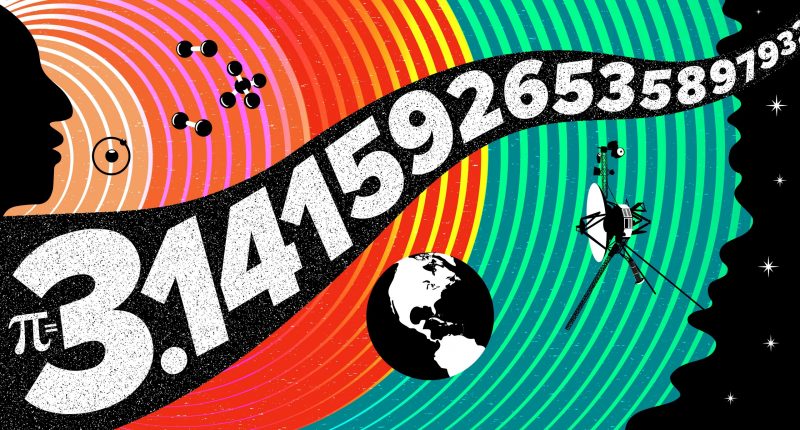Have you heard of Pi Day? It happens every year on March 14. The numbers 3-1-4 are the first three digits of the famous mathematical constant pi. Pi, in case you’re wondering, is the ratio of the circumference of a circle to its diameter.
No matter how large or small the circle, that ratio always works out to 3.14. That’s the magic of mathematics.
Plus, pi is a never-ending number. You often see it written as 3.14, but in fact it’s approximately equal to 3.14159 … and so on, into infinity. That sense of infinity is in part what makes pi – and Pi Day – so much fun.
So here’s a quick guide to Pi Day, which is celebrated by science lovers all over the world. It is a unique combination of fun and education, and anyone can participate.
Last chance to get a moon phase calendar! Only a few left. On sale now.
5 facts about pi
People compete in memorizing it. Rajveer Meena has the record for memorizing the most decimal places of pi at 70,000.
It’s used as stress tests for computers. Computing pi is a kind of “digital cardiogram” for computers.
A Givenchy men’s cologne is named pi. So you can smell like pi, too, if you are the intellectual and visionary kind.
Pi by other names. Pi is also known as Archimedes’ constant or Ludolph’s number.
Heroes sometimes use pi. For example, Spock foils an evil computer in Wolf in the Fold (the 14th episode of the second season of the American sci-fi TV series Star Trek), by preoccupying it forever, by having it calculate pi’s value.
By happy coincidence, March 14 is also Albert Einstein’s birthday!
Here are a couple of other online sources to help you celebrate Pi Day:
Join the Exploratorium’s annual Pi Day celebration.
Check out this Pi Day overview and countdown.
Or enjoy some Pi Day trivia via National Today.
History of Pi Day
Physicist Larry Shaw founded Pi Day in 1988, as part of his great work at the ground-breaking science museum Exploratorium in San Francisco. During the first Pi Day festivities, both staff and the public marched around one of the circular spaces in the museum while eating fruit pies.
In the United States, the U.S. House of Representatives officially recognized Pi Day as an annual event – National Pi Day – on March 12, 2009.
Today, many people and institutions celebrate Pi Day, including students, teachers, parents, museums, science centers and planetariums.
Celebrate Pi Day with NASA
NASA has an online celebration of Pi Day. At their site you can find many resources, including a Pi Day Challenge, along with lessons and downloads. The Pi Day challenge allows the public to solve some of the same problems NASA scientists and engineers do using pi.
More NASA resources
Here are more resources and ways you can celebrate Pi Day with NASA, including:
How Many Decimals of Pi Do We Really Need?
In addition, you can also download mobile and web backgrounds on The NASA Pi Day Challenge page.
A ‘pi planet’
By the way, did you know that there’s even a pi planet? It is an exoplanet, known as K2-315b, whose orbital period matches the value of pi. That is, this planet orbits its star every 3.14 Earth-days.
It is, in fact, almost the same size as Earth, with a radius 95% that of our own planet. That’s also about the same size as Venus, and like our nearby sister world, it’s a blisteringly hot place, with temperatures up to 350 degrees Fahrenheit (177 degrees C). It orbits a red dwarf (or M dwarf) star that’s cooler than our sun and only about 1/5 as large, called EPIC 249631677, which is 186 light-years from Earth.
Bottom line: March 14 is Pi Day, an annual mathematical event for science lovers. Here’s how to celebrate and take part in the NASA Pi Day Challenge!

